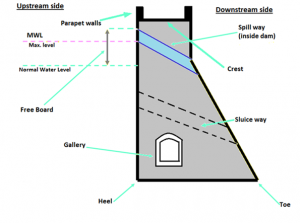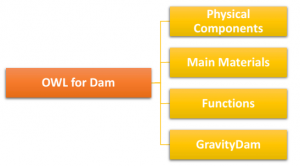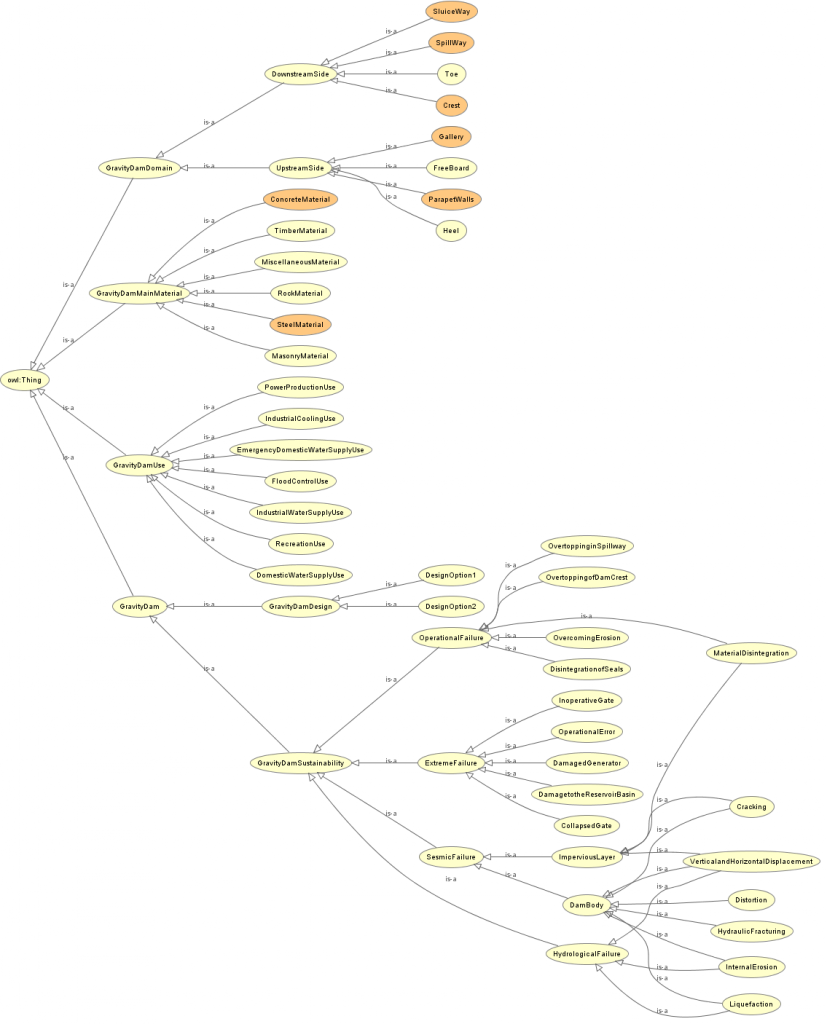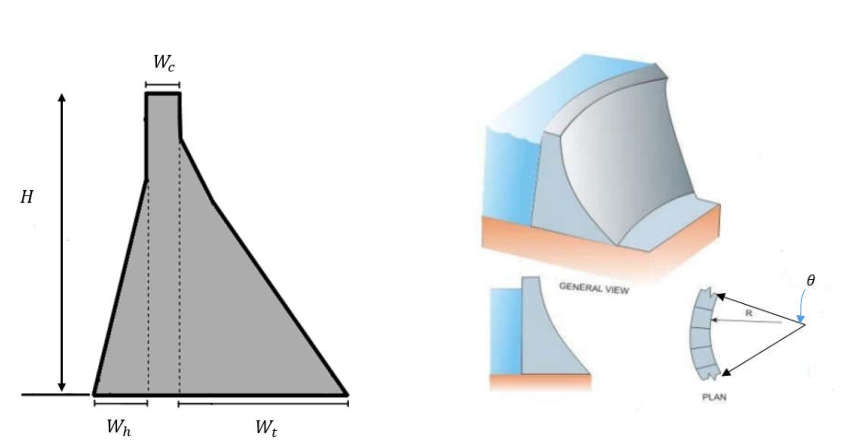Home / Group 3 / Initial Civil Systems / Concrete gravity dam
Introduction
A dam is defined as a kind of barrier used to regulate water flow and store it behind that barrier. Collecting water by using dams is one the most efficient way to manage water resources which are used for ages. Hence, dams are being an important subject for storage and future distribution. They are built for several purposes, including flood control, irrigation, hydropower, water supply, and recreation. Dams can be classified in many ways, depending on their size, materials, structural types, construction methods, etc. Dams can be classified as earth fill or rockfill dams, concrete dams, masonry dams, and timber dams based on the materials used. Depending upon structure and design, dams are classified into gravity dam, arch dam, buttress dam, and embankment dam.
The gravity profile is essentially triangular, with the outline geometry indicated in Fig.1. As shown in the figure, the dam is divided into an upstream side and a downstream side. On the upstream side, a dam comprises parapet walls, a freeboard, gallery, and heal. On the other side, it has a crest, spillway, sluiceway, and toe.

Defining Ontological Modeling
An ontology for a concrete gravity dam has been modeled into the program Protégé. This ontology is developed to represent concepts needed for the conceptual design of a gravity dam mainly focused on structural engineering, its sustainability, and how to make it more cost-effective by examining different design options and materials. There are four classes defined for representing the gravity dam domain such as physical components, main materials, gravity dam, and possible dam uses, and their relations as shown in Fig 2. The intended end-users are the designers and engineers involved in the design process and dam owners and engineers involved in the maintenance process. This ontology can be used for parametric modeling which is used for structural analysis or it can be used for sustainability assessment. This engineered product can be combined with other systems such as tunnel, amphibious house, and oscillating water column and become a single parameterized model, which can adapt to various interfaces built within.

After modeling a concrete gravity dam in the Protégé program and defining all the relationships between concepts, the OWLViz plugin was used to visualize the ontology. The following picture, which is exported from the program, describes the hierarchy as well as some relations of the components in an abstract model.

Parametric Model
According to the first part, with the help of the developed ontology and its physical, functional, and logical decompositions, the relations between the parameters of the model were identified. Here, the focus is on the relations that influence the physical embodiment of the model, for instance finding the best location for a specific utilization of the dam, to estimate its dimensions.
Regarding the design parameters, the system has 6 main parameters, which have a direct influence on the size of the structure. Besides, the spillway of the dam is also studied, and some parameters related to it are also defined. The following parameters were selected as the ones to control the parametric model:
- Radius of dam (R)
- Height of dam (H)
- Dam opening angle (θ)
- Width of toe (Wt)
- Width of heel (Wh)
- Width of crown (Wc)
- Height of spillway
- Width of spillway

It is essential to establish some high-performance criteria for the design before modeling the system. The main parameter that influences most of the decisions taken during dam design is the height of the dam structure. Lack of attention to the issue of the height of the dam causes Overtopping, one of the failure modes of the dam. Having height as a controlling parameter allows designers to use the parametric model for examining the system not being failed during operation time and also can be used for various site-related conditions. Another failure of the dam is called overturning. The second most important quality problem is overturning, which is closely related to the foundation. The parameters involved in this issue are toe and heel width. To create a balance between the weight of the dam and the amount of water behind the dam, these two parameters can be used to prevent this failure.
As mentioned above, to reduce the failure of overturning, the width of the toe and heel must be controlled. Also, the quantity of materials used like concrete and steel must be under consideration to reduce the dam cost.
- Reduce the failure of overturning
- Quantity of materials
Following, the developed parameterized concrete gravity dam in Dynamo as a 3D visual representation:
Download Files
Concrete Gravity Dam ontology model Concrete Gravity Dam parametric model
